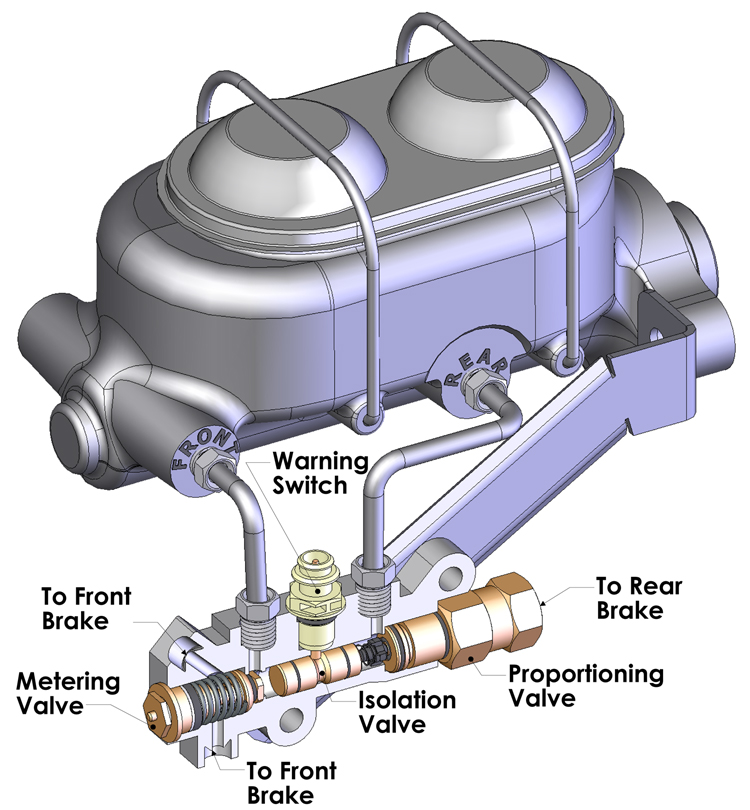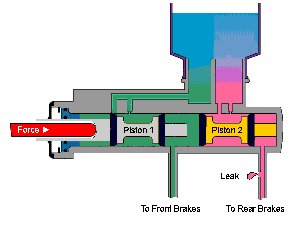2Loose
reliable source of info
I've been using a remote, hidden, vacuum brake booster on my two Chevy trucks, a '55 and a '58, for 10 to 12 years now with no problems...
I recently started doing a fair amount of work on my '55 halfton 4x4, to convert it to a cross steer setup, and rebuild the Olds 455 motor, which had developed a rod knock. Went through the brake system, rebuild kits in the front calipers and rear drums, and the master cylinder and slave vacuum master cylinder. They are back in the truck, the system got bled yesterday, and I have good solid pedal feel.
Here's a schematic of how this system looks:
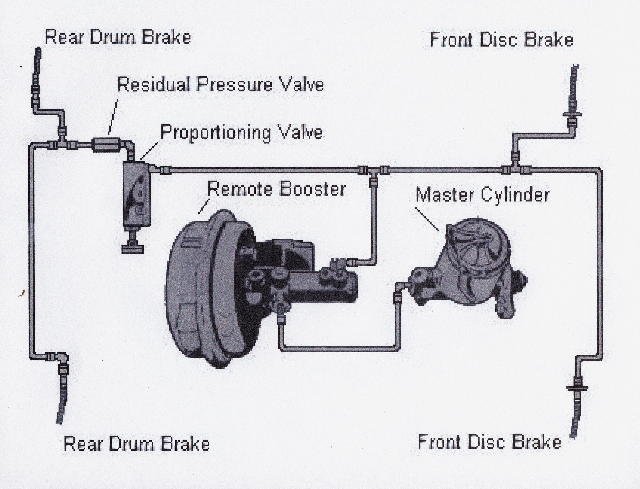
Here's a top view of the remote slave vacuum master cylinder, visible is the large vacuum port, the bleeder screw, the outlet connection (facing up) to the brakes on the end, and the inlet connection on the side that comes from the actuating master cylinder....
With the outlet on top like this I have not had any problems getting this master cylinder to self bleed all the air out when filling the system. The actuating master cylinder should be bench bled before installing to make sure all the air is out of it....
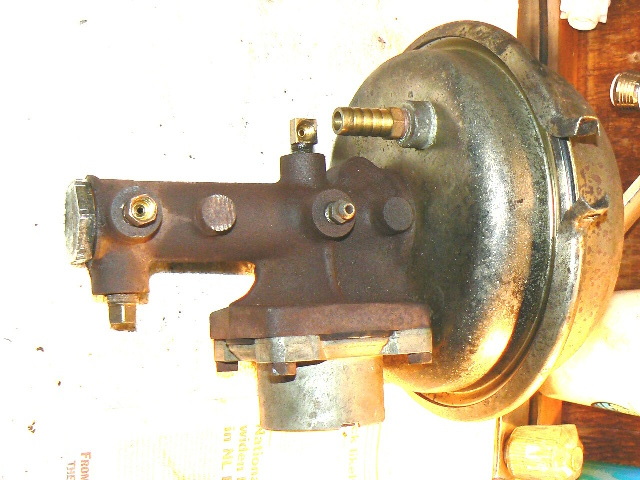
I bleed this system by slowly pumping the brake pedal, keeping the master cylinder filled, with the bleeder screw at one wheel at a time cracked and a tube on the bleeder with one end submerged in a container with brake fluid. I don't use a vacuum bleeder with this setup. It helps if two people can do this, but I did it by myself yesterday with no problems. With my 4x4 truck, even though the two master cylinders are under the floor, they are still above the brakes, so it will self bleed pretty well by itself, I just choose to help it along....
Another view.....
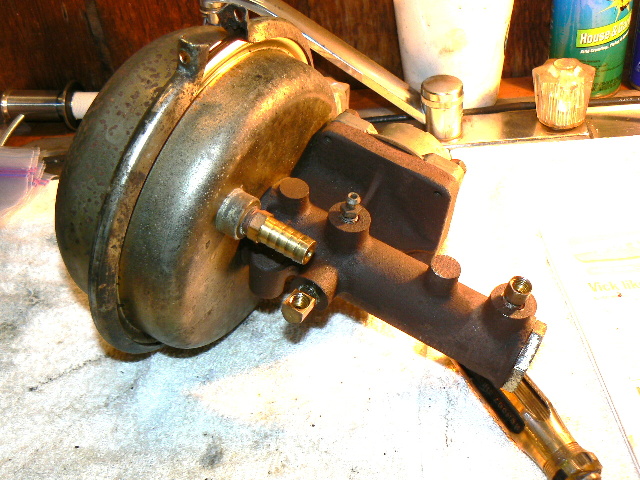
On one side is a filter system for the ambient air that goes in/out on the non-vacuum side of the diaphragm....
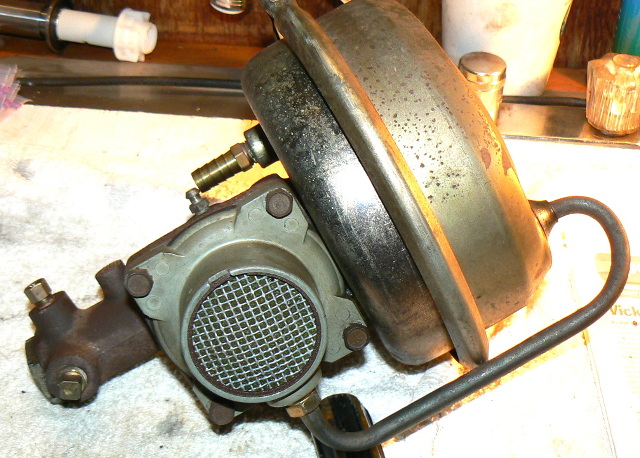
Here's the stock under floor master cylinder for the '55 Chevy half-ton pickup, and the slaved remote vacuum booster master cylinder...
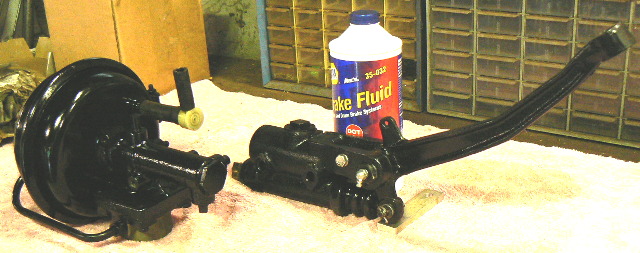
It's been difficult to get a good shot of the actual installation. If I get one I will post it.
Here's what the fire wall looks like on this truck, I like to keep 'em clean!

Aloha,
Willy
I recently started doing a fair amount of work on my '55 halfton 4x4, to convert it to a cross steer setup, and rebuild the Olds 455 motor, which had developed a rod knock. Went through the brake system, rebuild kits in the front calipers and rear drums, and the master cylinder and slave vacuum master cylinder. They are back in the truck, the system got bled yesterday, and I have good solid pedal feel.
Here's a schematic of how this system looks:
Here's a top view of the remote slave vacuum master cylinder, visible is the large vacuum port, the bleeder screw, the outlet connection (facing up) to the brakes on the end, and the inlet connection on the side that comes from the actuating master cylinder....
With the outlet on top like this I have not had any problems getting this master cylinder to self bleed all the air out when filling the system. The actuating master cylinder should be bench bled before installing to make sure all the air is out of it....
I bleed this system by slowly pumping the brake pedal, keeping the master cylinder filled, with the bleeder screw at one wheel at a time cracked and a tube on the bleeder with one end submerged in a container with brake fluid. I don't use a vacuum bleeder with this setup. It helps if two people can do this, but I did it by myself yesterday with no problems. With my 4x4 truck, even though the two master cylinders are under the floor, they are still above the brakes, so it will self bleed pretty well by itself, I just choose to help it along....
Another view.....
On one side is a filter system for the ambient air that goes in/out on the non-vacuum side of the diaphragm....
Here's the stock under floor master cylinder for the '55 Chevy half-ton pickup, and the slaved remote vacuum booster master cylinder...
It's been difficult to get a good shot of the actual installation. If I get one I will post it.
Here's what the fire wall looks like on this truck, I like to keep 'em clean!

Aloha,
Willy

